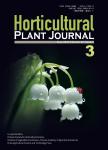Genome sequencing provides insights into Caprifoliaceae genome evolution and the mechanism underlying second blooming phenomenon in Heptacodium miconioides
作者机构:Zhejiang Provincial Key Laboratory of Plant Evolutionary Ecology and ConservationTaizhou UniversityTaizhouZhejiang 318000China Institute of EcologyTaizhou UniversityTaizhouZhejiang 318000China School of Life SciencesTaizhou UniversityTaizhouZhejiang 318000China
出 版 物:《Horticultural Plant Journal》 (园艺学报(英文版))
年 卷 期:2024年第10卷第3期
页 面:897-910页
核心收录:
学科分类:0710[理学-生物学] 07[理学] 09[农学] 071007[理学-遗传学] 0901[农学-作物学] 0902[农学-园艺学] 090102[农学-作物遗传育种]
基 金:supported by grants from the Zhejiang Provincial Natural Science Foundation of China(Grant No.LTY22C030002) the National Natural Science Foundation of China(Grant No.32001113) the Zhejiang Provincial Natural Science Foundation of China(Grant No.LQ19C030001)
主 题:Heptacodium miconioides Genome assembly Caprifoliaceae Chromosome fusion Sepal traits
摘 要:Plants of the Caprifoliaceae family are widely cultivated worldwide as ornamental plants owing to their numerous,sweet-smelling,beautiful flowers and *** miconioides Rehd.,a member of the family,is endemic to eastern China and is cultivated as a popular ornamental plant in North America and European *** has a rather novel and beautiful trait of high horticultural value,that is,its sepals persist and enlarge,turning purplish ***,we report the chromosome-level genome assembly of *** to understand its evolution and floral *** 622.28 Mb assembled genome harbored a shared whole-genome duplication with a related species,Lonicera *** genomic analysis suggested that chromosome fission events following genome duplication underlie the unusual chromosome number of these two species,as well as chromosome fission of another five chromosomes in ***,giving rise to a haploid chromosome number of 14(versus 9 in ***).In addition,based on transcriptome and chloroplast genome analysis of 17 representative species in the Caprifoliaceae,we assumed that large structural variations in the chromosomes of *** were not caused by *** in the candidate genes of the MADS-box family were detected in the *** genome,including AP1-,AP3-,and SEPexpanded,which might underlie the sepal elongation and development in this *** current findings provided a critical resource for genome evolution studies in Caprifoliaceae and it was an example of how multi-omics data can elucidate the regulation of important ornamental traits.



